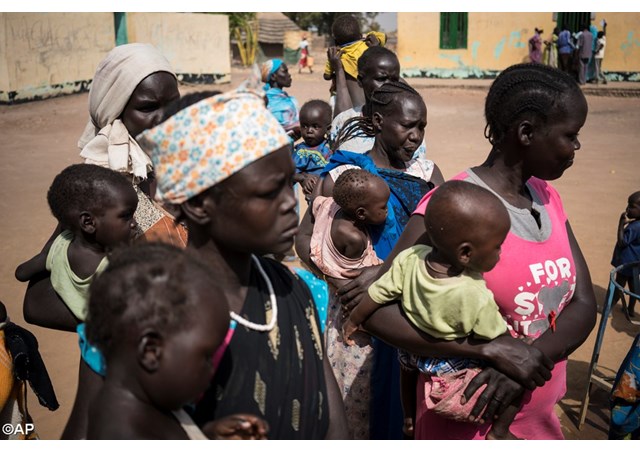
Violence endangering health of 24 million children in North Africa, ME - UNICEF

From Libya to Syria, grinding conflicts in North Africa and the Middle East have damaged health infrastructure and compromised water and sanitation services, threatening the health of 24 million children, the United Nations Children’s Fund (UNICEF) warned on Wednesday. “Violence is crippling health systems in conflict-affected countries and threatens children’s very survival,” Geert Cappelaere, UNICEF Regional Director for the Middle East and North Africa said on 24 May. “Beyond the bombs, bullets and explosions, countless children are dying in silence from diseases that could easily be prevented and treated.”
Millions of children in Yemen, Syria, the Gaza Strip, Iraq, Libya and Sudan are lacking nutritious food and being deprived of essential health care. Moreover, water and sanitation services have been compromised, causing waterborne diseases to spread. “When children can’t access healthcare or improved nutrition, when they drink contaminated water, when they live surrounded by waste with no sanitation, they become ill and some die as a result,” Cappelaere said. “There is very little standing between them and life-threatening illness, especially when humanitarian access is denied.”
Yemen - 9.6 million children in need
The two-year conflict in Yemen between forces loyal to the internationally-recognized government of President Abdrabbuh Mansour Hadi and those allied to the Houthi rebel movement, has plunged the country into one of the world’s worst humanitarian crises with widespread acute malnutrition leaving some 9.6 million children in need. For more than seven months, health care and sanitation workers have not been paid and contaminated water sources, untreated sewage and uncollected garbage have sparked a cholera outbreak, with 323 associated deaths in the last month alone.
Syria - 5.8 million children in need
The conflict in Syria has rendered 5.8 million children in need. Lifesaving supplies are regularly removed from the few entering convoys and many children lack vaccinations. Those who need it, struggle to get treatment as attacks on health facilities have become commonplace – almost 20 per month between January and March this year. The few operational hospitals function with limited staff while the threat of polio – such as the outbreak that hit Syria in 2013 – still looms.
Iraq – 5.1 million children at risk
In Iraq, where 5.1 million children are at risk, water supplies in camps for the displaced around Mosul are stretched to the limit as new families arriving daily – many with malnourished children. UNICEF estimates that for the past seven months, 85,000 children have been trapped in western Mosul, with limited medical access and no humanitarian aid.
Libya – 1.3 children will lack vaccination
Immunization programmes in Libya have been challenged since the 2011conflict erupted, with suspected measles cases reported among young children. Without new funding, over 1.3 million children will not be vaccinated against the highly contagious and potentially fatal measles and rubella.
Sudan – 2.3 million children in need
In just eight months, over 8,000 cases of acute watery diarrhoea have been recorded in Sudan’s conflict-affected areas, which are set to rise rapidly once the rainy season begins in June. Some 2.3 million children there are in need.
Across these countries, UNICEF is working to provide children with safe water, water treatment, medical and nutrition supplies but as conflicts continue, and amid a shrinking humanitarian space, challenges to reach all vulnerable children with lifesaving assistance are growing. (Source: UN)
| All the contents on this site are copyrighted ©. |


